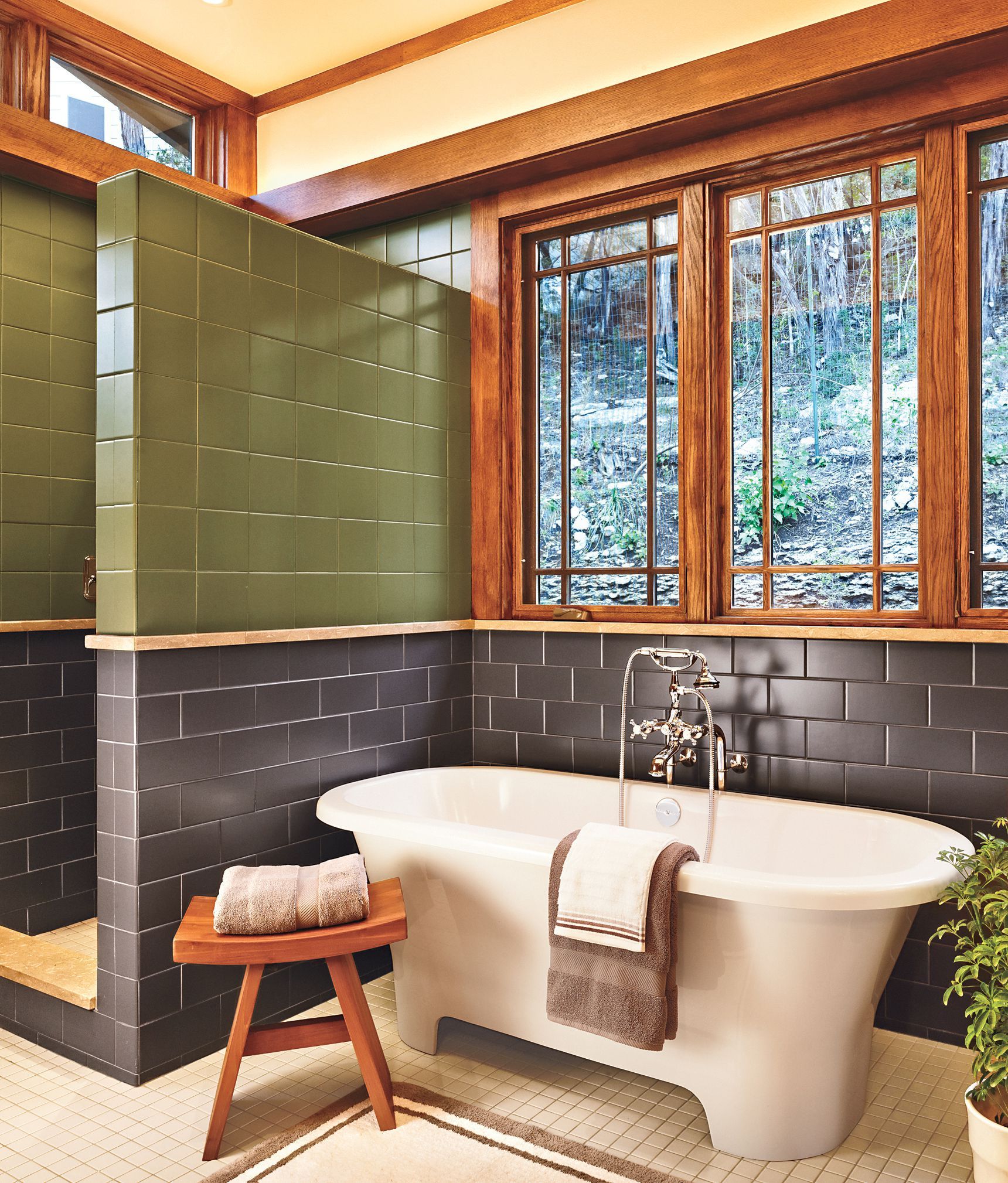Imagine stepping into a home where the weight of the world seems to lift, replaced by a sense of warmth, tranquility, and enduring style. This is the magic of Craftsman interior design, a movement born from the Arts and Crafts era that continues to captivate homeowners over a century later. Let’s delve into the heart of this beloved style, uncover its defining elements, and discover how you can infuse your own living spaces with the enduring charm of Craftsman design.
The Essence of Craftsman Interior Design
Craftsman style emerged in the late 19th and early 20th centuries as a direct response to the increasing industrialization of the era. It represented a return to handcrafted quality, natural materials, and a simpler, more organic approach to design. Figures like Gustav Stickley, a prominent furniture maker and publisher, championed the movement, advocating for homes that were both beautiful and functional.
At the core of Craftsman design are these key principles:
- Simplicity and Functionality: Clean lines, minimal ornamentation, and furniture designed for both purpose and comfort take center stage.
- Natural Materials: The beauty of wood (particularly oak, cherry, and maple), stone, brick, leather, and natural fabrics shines through.
- Handcrafted Details: Craftsman homes celebrate the artistry of the maker. Visible joinery, hand-hammered accents, and unique, often hand-made elements add character and warmth.
- Connection to Nature: Large windows, open floor plans, and nature-inspired color palettes blur the lines between indoors and out, fostering a sense of harmony with the natural world.
Defining Features: A Closer Look at Craftsman Elements
Structural Craftsmanship:
The bones of a Craftsman home are often as beautiful as the furnishings themselves:
- Exposed Beams: More than just structural supports, exposed beams, often crafted from sturdy timbers, draw the eye upward, adding a sense of grandeur and highlighting the natural beauty of the wood.
- Built-in Furniture: Craftsman homes maximize space and functionality with built-in bookcases, window seats, and cabinetry, often seamlessly integrated into the architecture of the room.
- Fireplaces: A focal point in many Craftsman living spaces, fireplaces typically feature brick or tile surrounds, substantial mantels ideal for displaying artwork or treasured objects, and often built-in seating or storage nearby.
A Celebration of Materials:
- Wood: The warmth and richness of wood are central to Craftsman design. Oak, cherry, maple, and mahogany are frequently used for flooring, beams, trim, and furniture, often with a rich, warm stain that highlights the natural grain.
- Stained Glass: Windows, doors, and even light fixtures often feature stunning stained glasswork, adding splashes of color, artistry, and a touch of the handcrafted to these spaces.
- Textiles: Natural fibers like cotton, linen, and wool dominate. Upholstery, curtains, and rugs typically feature muted earth tones or patterns inspired by nature, adding to the overall sense of warmth and organic comfort.
Decorative Touches:
Craftsman interiors eschew excessive ornamentation, but carefully chosen details enhance the overall aesthetic:
- Hammered Copper: Accents like switch plates, light fixtures, and hardware, often crafted from hammered copper, add a touch of rustic elegance and warmth.
- Pottery and Ceramics: Hand-thrown pottery and ceramics, typically with simple glazes that let the natural beauty of the material shine through, complement the organic feel of these spaces.
- Artwork: Landscapes, botanical prints, or artwork from the Arts and Crafts era itself (think stylized floral motifs or simple geometric patterns) enhance the connection to nature and the handcrafted.
Evolving Style: Modern Takes on Craftsman Design
While deeply rooted in tradition, Craftsman design has proven to be remarkably adaptable:
Contemporary Craftsman: This fresh take on the classic style retains the core principles but incorporates cleaner lines, lighter color palettes, and sometimes unexpected materials for a more modern feel.
Transitional Style: The warmth and character of Craftsman elements can be beautifully incorporated into other design styles, such as farmhouse or modern, to create truly unique and personalized spaces. Imagine a sleek, modern kitchen warmed by a Craftsman-inspired fireplace or a farmhouse dining room furnished with sturdy, handcrafted Craftsman chairs.
Bringing the Craftsman Spirit Home: Tips for Success
1. Prioritize Quality Over Quantity: When selecting furniture, textiles, and materials, think like a Craftsman artisan. Invest in well-made pieces crafted from solid wood, durable fabrics, and natural materials that will stand the test of time. Furniture with exposed joinery or handcrafted details adds to the authenticity.
2. Embrace the Beauty of Imperfection: One of the most endearing aspects of Craftsman style is its embrace of imperfection. Handcrafted elements often have subtle variations in color, texture, or shape – these “beauty marks” add character and a sense of history to your home.
3. Let Function Lead the Way: Every element in a Craftsman home serves a purpose. Choose furniture that is both beautiful and practical, such as built-in bookshelves to showcase your favorite reads, a sturdy dining table for family gatherings, or a cozy window seat perfect for curling up with a good book.
4. Infuse Your Personal Style: While adhering to the core principles of Craftsman design, don’t be afraid to infuse your own personality into your space. Incorporate artwork, textiles, and accessories that reflect your passions, interests, and family history. Vintage maps, botanical prints, family photos, or a collection of handcrafted pottery can all find a place within a modern Craftsman interior.
5. Pay Attention to Lighting: Warm, inviting lighting is crucial in Craftsman homes. Incorporate a mix of ambient, task, and accent lighting. Consider using fixtures with stained glass, mica shades, or hammered copper accents to enhance the aesthetic.
What is Craftsman style interior?
Imagine stepping into a room that feels like a warm hug, where natural materials and handcrafted details come together to create a space that’s both elegant and inviting. That’s the essence of Craftsman style interior design. Born from the Arts and Crafts movement of the early 20th century, this enduring style is all about celebrating simplicity, functionality, and a deep connection to the natural world.
How to Make Your House Look Craftsman?
Transforming your house into a Craftsman haven is about embracing the beauty of handcrafted details, natural materials, and a sense of warmth and simplicity. Here’s how:
- Embrace Natural Materials: Think warm wood tones, rustic stone fireplaces, and leather accents to bring a sense of the outdoors in.
- Simplify Your Decor: Choose furniture with clean lines, minimal ornamentation, and built-in storage to maximize space and functionality.
- Embrace Earth Tones: Think deep greens, rich browns, and warm golds to create a cozy and inviting atmosphere.
What defines Craftsman style furniture?
Craftsman style furniture is like that trusty friend who’s always there for you – reliable, comfortable, and built to last. It’s about quality craftsmanship, simple lines, and a timeless appeal that never goes out of style. Here are some key features:
- Sturdy and Durable Construction: Think solid wood construction, often with exposed joinery (like those beautiful dovetail joints) that add to the handcrafted charm.
- Simple and Functional Design: Clean lines, rectangular shapes, and minimal ornamentation ensure that every piece serves a purpose.
- Natural Materials: Expect to see a lot of beautiful woods like oak, cherry, and mahogany, often with their natural grains and textures on full display.
Explore the timeless beauty of Craftsman style interior design and discover how its unique blend of natural materials, organic shapes, and handcrafted details can create a warm and inviting atmosphere in your home.
- Modern Butcher Block Kitchen: Warmth and Style with White Cabinets - January 6, 2026
- White Cabinets with Butcher Block Countertops: A Kitchen Classic - January 5, 2026
- White Kitchen With Butcher Block Countertops: A Warm, Inviting Design - January 4, 2026










